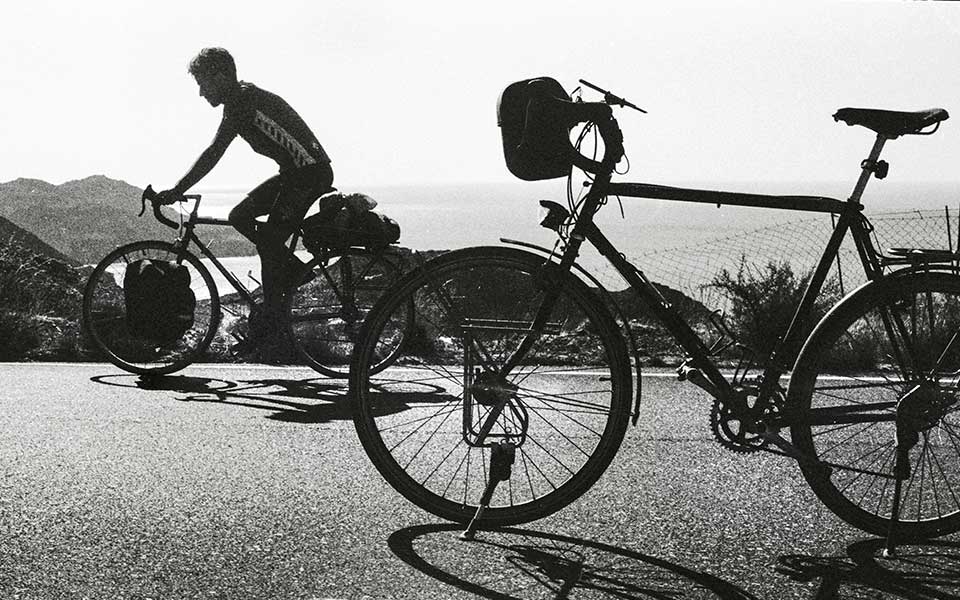Crete is its own beast. Even Greeks can find themselves adrift when they come face-to-face with a new dialect, distinct customs, complex local dances, and the warm, welcoming, yet fiery temperament of the locals. Crete is the land of mythology, the home of the Minotaur; it’s the place where the Minoan civilization emerged and thrived. It’s where seaside caves transfixed alternative travelers like Joni Mitchell in the 1960s, and where village life still revolves around the kafeneio. In fact, it’s so large, diverse and culturally rich that when you try to talk about Crete as a whole, you quickly find yourself surrounded by a labyrinth of contrasts. Crete can all too easily seem overwhelming. Perhaps the best way to grab this mythical beast by the horns is to leave the tourist trail behind, cycle around the island and meet the amazing people that live here.
Our pathfinders on this bicycle adventure were Angel Ballesteros, 34, a Spanish documentary filmmaker based in Athens for the last six years, and Iasonas Stavrakis, 26, a music producer and graphic designer from Athens.
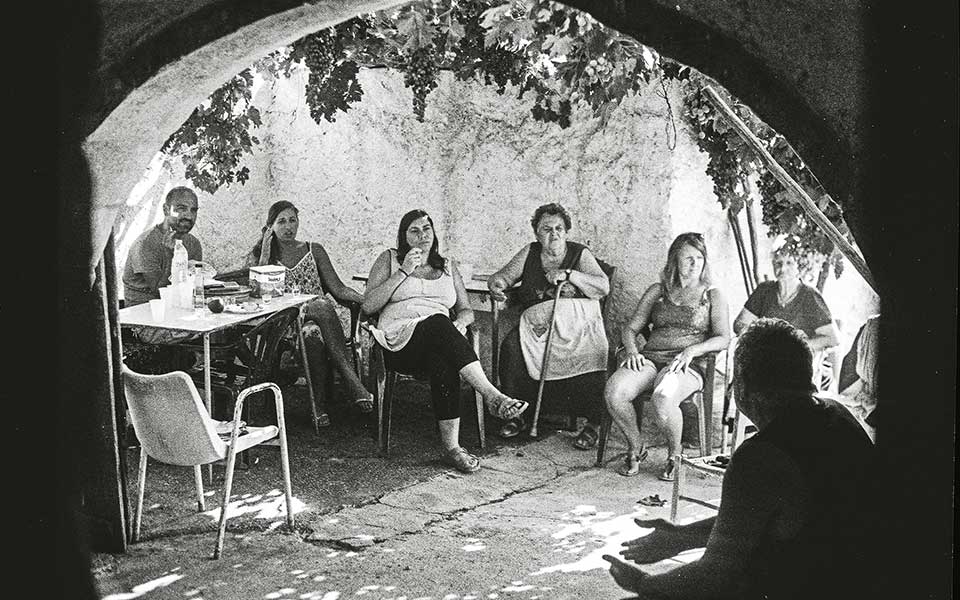
© Angel Ballesteros

© Angel Ballesteros
INTO THE UNKNOWN
After rolling off the ferry from Athens, the pair completed some last-minute planning before warming up their legs with a cycle around Hania’s ancient sites and its old harbor, a Mediterranean patchwork shaped by centuries of Venetian and Ottoman rule, watched over by the Yali Tzamisi (“Mosque by the Sea”).
The western gateway to Crete, Hania is one of Europe’s most picturesque port cities, and can beguile visitors for days, but Angel and Iasonas were keen to start eating into the 58 kilometers of coastline that separated them from Rethymno to the east. Avoiding the heavy traffic along the E75 highway, they took the old road, which follows a quieter if more winding and hillier route, with more frequent opportunities for stops.
The Venetian town of Rethymno buzzes with youthful energy as Greek students and their counterparts from across Europe on Erasmus exchanges keep the city’s bars heaving with vibrant nightlife until all hours. However, Angel and Iasonas chose not to spend all night drinking with the bright young things of Rethymno. Instead, they bivouacked (a legal alternative to free camping, which is illegal across Greece, bivouacking precludes erecting a structure such as a tent) on a beach just outside of town and were rewarded with a majestic sunrise over the sea the next morning.
The second day took them all the way to Irakleio, an 86km ride. The route conditions presented more of a challenge, with 1180m of climbing and zig-zag switchbacks that seemed to go on forever. Together with the ancient ruins of the Knossos and Phaistos Minoan palaces, Irakleio’s biggest draw is the Archaeological Museum, a masterful presentation of the art and remains of the Minoan civilization, which flourished from c. 2700 to c. 1450 BC. Many creative people here introduce themselves as “contemporary Minoans” and see their Cretan heritage as a primary inspiration in their work.
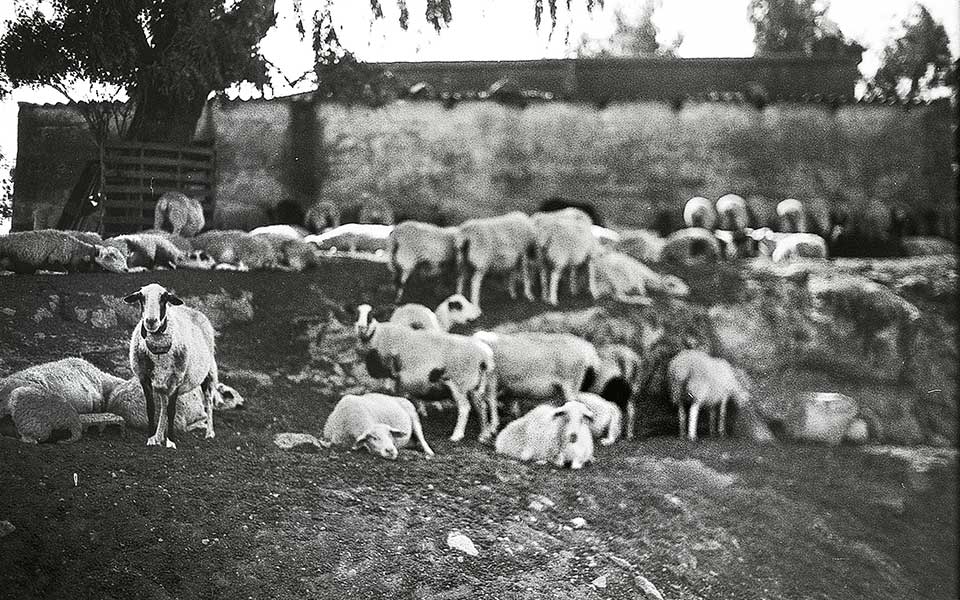
© Angel Ballesteros
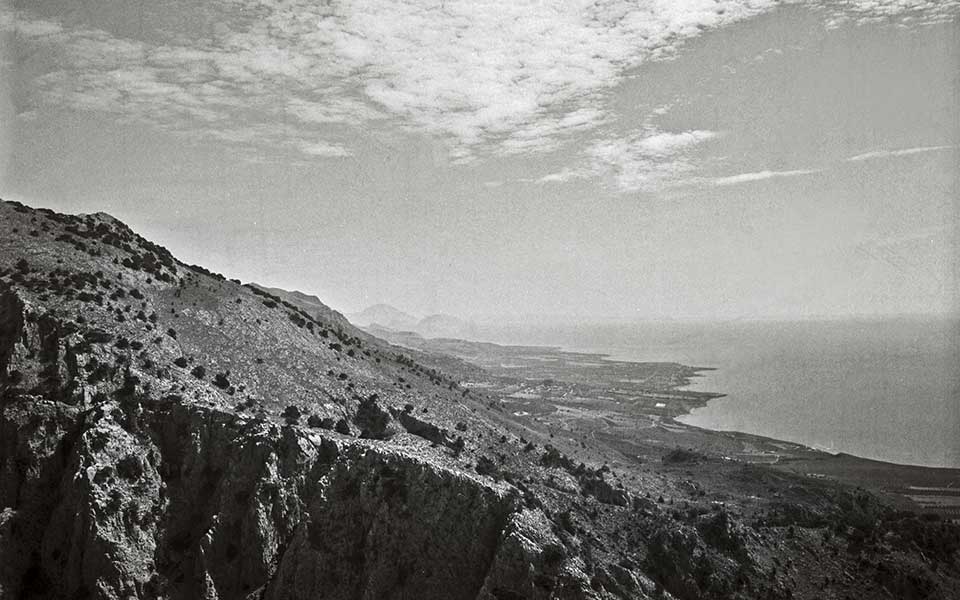
© Angel Ballesteros
THE CYCLES OF TIME
Crete is a time machine. Ancient ruins can transport you back to civilizations from millennia ago, or you can climb to one of the remote villages high in the mountains, where day-to-day life has changed very little in the last few centuries. These isolated hillside villages are places where the reassuring rhythm of the seasons still guides traditions, feasts and festivals, and where sharing what you have with strangers – whether it be water, fruit, olive oil or bike tools – is an inviolable part of the code of hospitality.
One such place is Epano Episkopi, the ancestral home of one of Angel and Iasonas’ friends from Athens. You won’t find this village in the tourist guides; it’s a window into the authentic lifestyle of Cretan villagers. To reach the village, our cyclists had to cross one of the most challenging mountain sections of the entire trip, as they traveled from Aghios Nikolaos, the regional capital they visited after Irakleio.
After four nights of sleeping on beaches alongside the road, both appreciated the chance for a night in a real bed. But they didn’t have long to relax, as they were up at dawn the next day to help make paximadia – a hard bread and a staple of Cretan cuisine – with the elders of the village. The soft loaves were placed in two lines on a long plank of wood, then thrust into an enormous, traditional wood-burning stone oven. At around midday, people from the village gathered around for the finished product, which they enjoyed warm from the oven with plenty of raki, the ubiquitous Cretan spirit.

© Angel Ballesteros
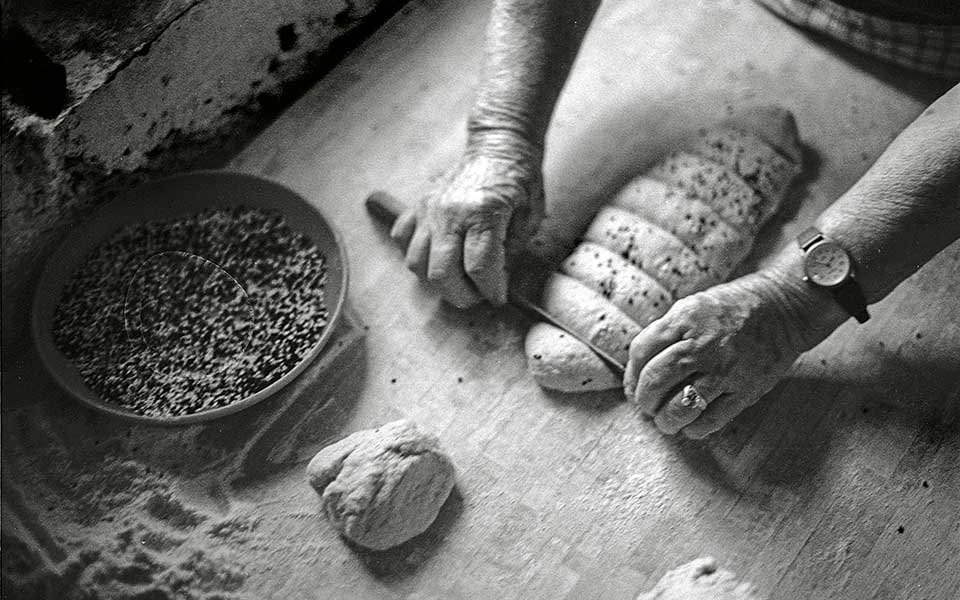
© Angel Ballesteros
Angel and Iasonas timed their stay in Epano Episkopi to coincide with August 15 – the Dormition of the Virgin Mary and Greece’s biggest Orthodox summer celebration. As evening fell, they took boxes of paximadia and set off for the nearest panigyri, or festival, in the village of Maronia, where people flocked from the surrounding hills to dance long into the night, among tables laden with meat from spit-roasted pigs and goats, as well as other local specialties.
This being Crete, the raki flowed freely and the traditional lyra, with its throaty, atmospheric sound, was the master of ceremonies, with dancers linking arms and moving in hypnotic spirals until the early hours. Angel won five kilos of sea salt in the raffle. “Everyone was dancing and eating with everyone else,” he remembers. “Teenagers were dancing with their grandparents, and strangers were dancing together, too. This is what I love about the panigyri, how it unites everyone, even the tourists who, on this night, aren’t seen as tourists at all.”
On the road the next day, their eyes were blurry and their legs were heavy, but their souls were light. After reaching Crete’s eastern tip at Paleokastro, they explored the caves and beaches around Xerokambos. Riding through the night, they leaned their heavily laden bicycles against the rocks on an isolated beach near Tertsa. Lying flat on the ground, they looked up into the sky. Far from the lights of the major cities and resorts, the night was profoundly dark. As their eyes adjusted to the night sky, more and more stars came into view, until the entire sky was a dazzling array of tiny specks of light – and the odd shooting star. Here was more proof that, on Crete, the further you get from the crowds, the more you see.
Contrasts with the north grew sharper as they headed deeper into the south of the island, towards Myrtos, Tris Ekklisies and Lentas. The northern coast is highly developed; it’s where most of the island’s multibillion-euro tourism industry is concentrated, home to everything from all-inclusive resorts for the masses to Crete’s own version of the French Riviera, the Elounda Coast, with its world-class, ultra-luxurious spa resorts.
The south, however, is much wilder, with very basic tourist services that appeal more to independent travelers and campers. The busy tarmac roads of the north were replaced here with mostly unpaved, quiet thoroughfares, although the few cars that did pass were driven erratically by hot-headed Cretans, sending pebbles flying and raising dust clouds.
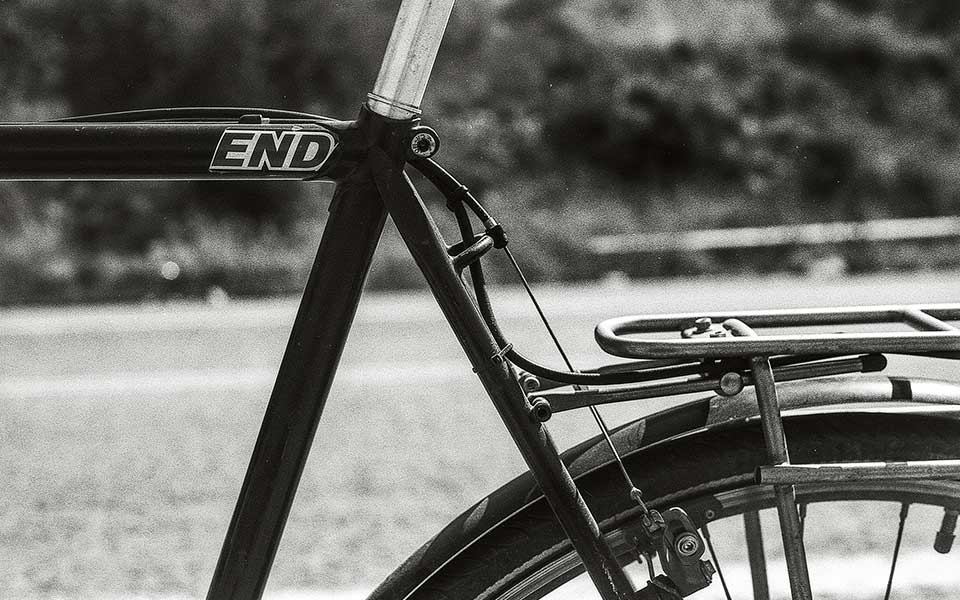
© Angel Ballesteros
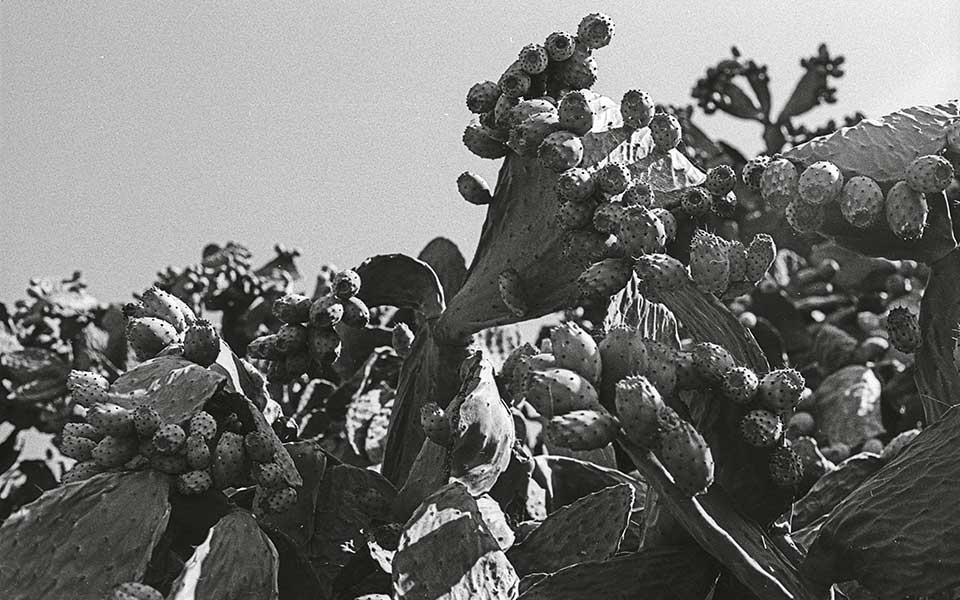
© Angel Ballesteros
THE FINAL SHOWDOWN
After sleeping on the beach near spectacular Agiofarago Gorge, Angel and Iasonas embarked on the long and hard journey back to Hania. “I was absolutely exhausted when we got back to Hania, but thrilled, too.” Iasonas remembers. “The cities are all special in their own way, but the countryside is even more diverse; you see olive, palm and even banana trees. Some mountains are forested, while others are so dry they’re as bare as the surface of Mars.” However, although the landscape and terrain may have varied, the open nature of the people never wavered. “The villages by the sea have a totally different atmosphere to those in the mountains,” Iasonas says. “But every person we told we were cycling around Crete wanted to help us.”
Over two weeks (with nine days’ cycling), Angel and Iasonas rode through all of Crete’s four regional units. They sweated in the sunbaked scenery, swam on isolated beaches, gazed at distant stars, and drank and danced with people from tight-knit traditional societies. Pumping out a fierce rhythm on the pedals, they rode nearly 1000 kilometers through this labyrinth of contrasts and contradictions, all the while circling the savage Minotaur at its center. At times, the labyrinth (or should that be the crazy Cretan drivers?) nearly defeated them. But finding the strength to keep pushing forward, our heroes – just like Theseus, the Athenian adventurer – looked deep into the beast’s piercing eyes and triumphed over the wild and mythical creature that is Crete.

